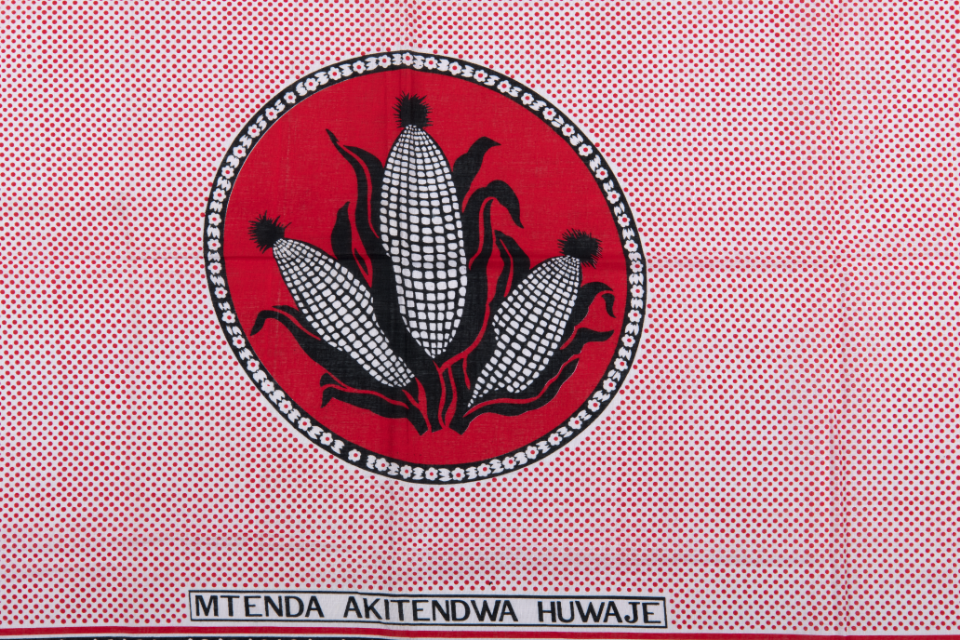Central Motif: Maize Cobs
Three maize cobs take the center stage of our kanga. It is a crop that has been abundant in Kenya for a long time. However, since the beginning of colonialism and European settlement in the country, many Kenyans have associated it with the colonial government due to colonial agrarian policies that attempted to limit maize cultivation by African farmers. Those policies represented the interests of the European settler communities, who settled in the Kenyan highlands with the goal to make their money by cultivating cash crops. Many decided to cultivate maize, as it is an easy and cheap crop to grow. By implementing policies that supported white farmers in cultivating maize, the government attempted to drive African farmers out of business; many of them then had to become laborers on European settler farms. Maize has thus, for a long time, had a negative connotation. Is this by chance in some way related to the message conveyed by this kanga?
